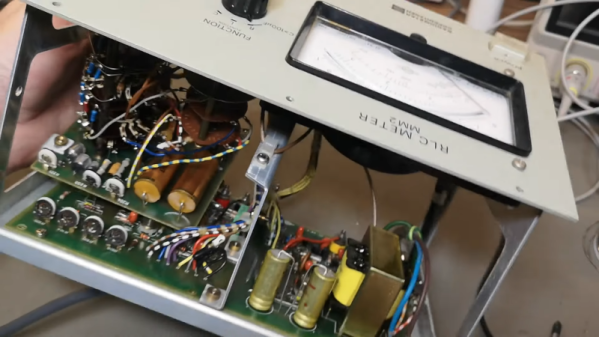The Great American Eclipse v2.0 has come and gone, sadly without our traveling to the path of totality as planned; family stuff. We did get a report from friends in Texas that it was just as spectacular there as expected, with the bonus of seeing a solar flare off the southwest limb of the disk at totality. Many people reported seeing the same thing, which makes us a bit jealous — OK, a lot jealous. Of course, this presented an opportunity to the “Well, ackchyually” crowd to point out that there were no solar flares or coronal mass ejections at the time, so what people saw wasn’t an exquisitely timed and well-positioned solar flare but rather a well-timed and exquisitely positioned solar prominence. Glad we cleared that up. Either way, people in the path of totality saw the Sun belching out gigatons of plasma while we had to settle for 27% totality.
Porting Modern Windows Applications To Windows 95
Windows 95 was an amazing operating system that would forever transform the world of home computing, setting the standard for user interaction on a desktop and quite possibly was the OS which had the longest queue of people lining up on launch day to snag a boxed copy. This raises the question of why we still don’t write software for this amazing OS, because ignoring the minor quibbles of ‘security patches’ and ‘modern hardware compatibility’, it’s still has pretty much the same Win32 API as supported in Windows 11, plus it doesn’t even spy on you, or show you ads. This line of reasoning led [MattKC] recently to look at easy ways to port modern applications to Windows 95.
In the video, the available options are ticked off, starting with straight Win32 API. Of course, nobody writes for the Win32 API for fun or to improve their mental well-being, and frameworks like WxWidgets and QuteQt have dropped support for Windows 9x and generally anything pre-Win2k for years now. The easiest option therefore might be Microsoft’s .NET framework, which in its (still supported) 2.0 iteration actually supports Windows 98 SE, or basically within spitting distance of running it on the original Win95.
Continue reading “Porting Modern Windows Applications To Windows 95”
Danish Vintage LRC Meter Reveals Inside
Modern test equipment is great, but there’s something about a big meter with a swinging needle and a mirror for parallax correction that makes a device look like real gear. [Thomas] shows us a Danish LCR meter (or, as it says on the front, an RLC meter). The device passes AC through the component and uses that to determine the value based on the setting of a range switch. It looks to be in great shape and passed some quick tests. Have a look at it in the video below.
An outward inspection shows few surprises, although there is an odd set of terminals on the back labeled DC bias. This allows you to provide a DC voltage in case you have a capacitor that behaves differently when the capacitor has a DC voltage across it. Continue reading “Danish Vintage LRC Meter Reveals Inside”
The BBC Micro, Lovingly Simulated In VR
The BBC Micro was many peoples’ first exposure to home computing, and thanks to [Dominic Pajak], you can fire up this beloved hardware in WebXR. Is it an emulator? Yes, but it’s also much more than that.
The machine, the CRT, the keycaps, and even the sounds of the original keypresses are all brought to life as accurately as possible. The result is not just an emulator. It’s a lovingly-made BBC Micro simulator you can use with a VR headset. Or just use your browser and type on your real keyboard if you like.
Dump A Code Repository As A Text File, For Easier Sharing With Chatbots
Some LLMs (Large Language Models) can act as useful programming assistants when provided with a project’s source code, but experimenting with this can get a little tricky if the chatbot has no way to download from the internet. In such cases, the code must be provided by either pasting it into the prompt or uploading a file manually. That’s acceptable for simple things, but for more complex projects, it gets awkward quickly.
To make this easier, [Eric Hartford] created github2file, a Python script that outputs a single text file containing the combined source code of a specified repository. This text file can be uploaded (or its contents pasted into the prompt) making it much easier to share code with chatbots.
Continue reading “Dump A Code Repository As A Text File, For Easier Sharing With Chatbots”
A Slew Of AI Courses To Get Yourself Up To Speed
When there’s a new technology, there’s always a slew of people who want to educate you about it. Some want to teach you to use their tools, some want you to pay for training, and others will use free training to entice you to buy further training. Since AI is the new hot buzzword, there are plenty of free classes from reputable sources. The nice thing about a free class is that if you find it isn’t doing it for you, there’s no penalty to just quit.
We noticed NVIDIA — one of the companies that has most profited from the AI boom — has some courses (not all free, though). Generative AI Explained, and Augment your LLM Using Retrieval Augmented Generation caught our eye. There’s also Building a Brain in 10 Minutes, and Introduction to Physics-informed Machine Learning with Modulus. These are all quite short, though.
Continue reading “A Slew Of AI Courses To Get Yourself Up To Speed”
When Your Level Shifter Is Too Smart To Function
By now, 3.3V has become a comfortable and common logic level for basically anything you might be hacking. However, sometimes, you still need to interface your GPIOs with devices that are 5 V, 1.8 V, or something even less common like 2.5 V. At this point, you might stumble upon autosensing level shifters, like the TXB010x series Texas Instruments produces, and decide that they’re perfect — no need to worry about pin direction or bother with pullups. Just wire up your GPIOs and the two voltage rails you’re good to go. [Joshua0] warns us, however, that not everything is hunky dory in the automagic shifting world.
During board bring-up and multimeter probing, he found that the 1.8 V-shifted RESET signal went down to 1.0V — and its 3.3 V counterpart stayed at 2.6V. Was it a current fight between GPIOs? A faulty connection? Voltage rail instability? It got more confusing as the debugging session uncovered the shifting operating normally as soon as the test points involved were probed with the multimeter in a certain order. After re-reading the datasheet and spotting a note about reflection sensitivity, [Joshua0] realized he should try and probe the signals with a high-speed logic analyzer instead.
Continue reading “When Your Level Shifter Is Too Smart To Function”


















